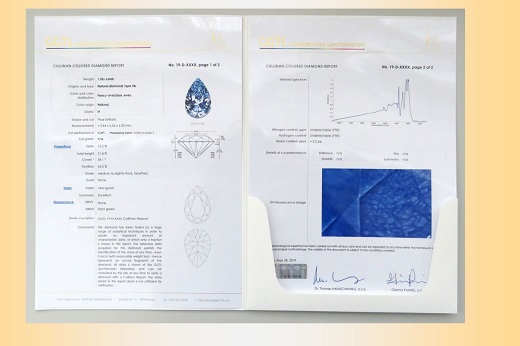Lab Creates Tech for Identifying Stolen Stones
 RAPAPORT... GGTL Laboratories has developed technology that can match a stolen diamond to its identification report, even after it is recut to hide its origin. Technicians use a range of analytical identification data found in the stone, similar to a fingerprint. The information, which is derived through spectral and imagingdata, maps the internal features of a diamond. Those parameters are then stored in the Cullinan Diamond Report, a partnershipbetween GGTL and Cullinan Diamonds owner, Mark Cullinan, the great-grandson of Sir Thomas Cullinan, owner of the Cullinan mine. Using the data, the lab can identify a diamondeven if it has been physically altered, GGTL claims. All other diamond-tracking methods that are currently on the market rely on factors suchas weight, cut and dimensions, or the presence of some tagging substance, GGTL noted. "Themethod applied by GGTL Laboratories maps a stone's defects via various imagingand spectroscopy methods, properties that cannot be modified without treating adiamond," the lab said last week. GGTL is issuing Cullinan Reports for high-quality white andcolored diamonds, it noted. The full Cullinan Report contains complete gradinginformation, including the 4Cs, in addition to the fingerprint, while the ShortCullinan Report offers only analytical and imaging data, to avoid contradicting thegrades of an existing report from another laboratory, GGTL added. Image: The Cullinan Diamond Report. (GGTL Laboratories)
RAPAPORT... GGTL Laboratories has developed technology that can match a stolen diamond to its identification report, even after it is recut to hide its origin. Technicians use a range of analytical identification data found in the stone, similar to a fingerprint. The information, which is derived through spectral and imagingdata, maps the internal features of a diamond. Those parameters are then stored in the Cullinan Diamond Report, a partnershipbetween GGTL and Cullinan Diamonds owner, Mark Cullinan, the great-grandson of Sir Thomas Cullinan, owner of the Cullinan mine. Using the data, the lab can identify a diamondeven if it has been physically altered, GGTL claims. All other diamond-tracking methods that are currently on the market rely on factors suchas weight, cut and dimensions, or the presence of some tagging substance, GGTL noted. "Themethod applied by GGTL Laboratories maps a stone's defects via various imagingand spectroscopy methods, properties that cannot be modified without treating adiamond," the lab said last week. GGTL is issuing Cullinan Reports for high-quality white andcolored diamonds, it noted. The full Cullinan Report contains complete gradinginformation, including the 4Cs, in addition to the fingerprint, while the ShortCullinan Report offers only analytical and imaging data, to avoid contradicting thegrades of an existing report from another laboratory, GGTL added. Image: The Cullinan Diamond Report. (GGTL Laboratories)